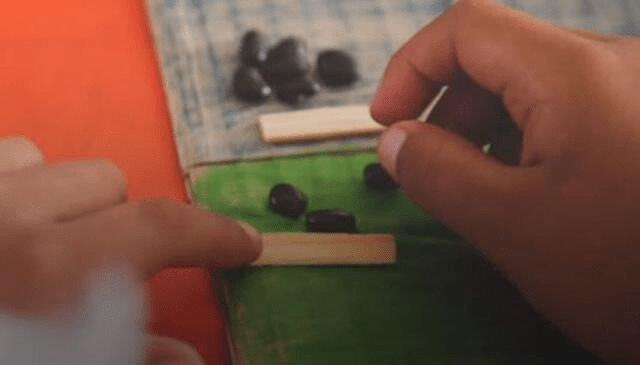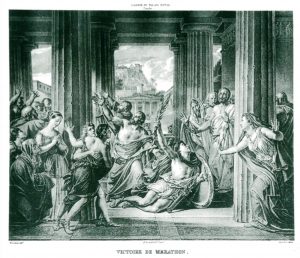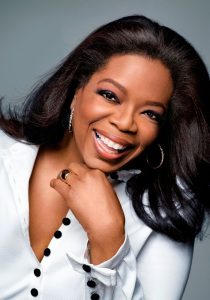Imagine learning math in ancient times where nature and the environment were the only resources for learning. Before using calculators and textbooks to learn math, ancient civilizations had to use what was available to them in their environment. Ancient civilizations such as the Mayans had a well-developed math system, but did not have the complex methods that we use today, such as calculators and textbooks. Although the Mayan mathematical system seems like something merely from the past, its importance still prevails today. Students today are learning math by using the Mayans’ math system. Learning math through the ancient ways of the Mayans proves to be effective even today.
The Mayans created the zero numerical symbol and based their math on a base-20 numerical concept. The use of the base-20 system most likely arose from the ancient people using their fingers and toes to count.1 In their numerical system, the Mayans used three symbols that were represented by objects in their environment. The first symbol was a dot, which represents the unit of one. The second symbol used was the bar, which represented 5. Once there were four individual dots, they were then combined to form a bar. The last symbol that was used was the zero.2

The environment and agriculture inspired the Mayan’s way of doing math. The Mayans relied heavily on agriculture and their environment so they incorporated what was available to them into their math system. The system the Mayans used for teaching mathematics was through the use of concrete and representational materials. To represent the dot, a small rock, bean, or seed was used. A bar was represented by sticks or twigs. The zero was represented by a shell.3

The approach Mayans use in mathematics has many benefits and advantages. Through the use of concrete objects, students are able to use manipulatives in order to do math. The use of this model helps put an abstract concept like math and simplify it into a concrete concept.4 This system does not use numbers when doing math but instead manipulates objects that represent the numbers in order to perform an operation. Through the use of the Mayan mathematical concepts, students are able to do math in a tangible way that is simple and fun. Doing math using simple processes prevents students from having to memorize extensive amounts of information.5
Throughout the years, math shifted from the Mayan mathematical system to the mathematical system we use today. Colonization of the descendants of the Mayans by Spanish conquistadores and missionaries greatly influenced and shifted their unique practices, such as mathematics. Throughout the years Spanish rule influenced and altered the Mayan civilization. One of the Spanish conquistadores that caused the greatest change to the Mayan society was Diego de Landa. In 1541, Diego de Landa requested to be sent to the New World as a missionary. Diego visited the great cities of the Maya in order to gain insight about their history and culture. However, when Diego came across practices he did not agree with, he took drastic measures to enforce changes in the Mayan society. Diego was determined to enlighten the Mayans, even by force, by gathering their documents and burning them.6
The methods used by the Mayans more than 2,000 years ago was rediscovered by Luis Fernando Magaña, a professor of physics at Mexico’s National Autonomous University. Through Magaña’s interest in the Mayan numerical system, he was inspired to share his findings with others. Magaña would introduce and educate administrators and teachers in the Mayan system to help him reach his goal of implementing this new math system in schools.7
In 2010, the Mayan mathematical system was adopted into math teaching programs in schools located in Yucatan and in Indigenous zones. The integration on teaching math using the Mayan mathematical system has not been formally adopted into the math curriculum, but more teachers are using it to teach math in their classrooms.8 Magaña personally trains the educators himself, to ensure the quality of the Mayan mathematical system being properly taught to students.9
Using the mathematical system of the Mayans has brought about good results. In 2011, a year after the Mayan mathematical system was first used in classrooms, students have shown better math results in preschool and elementary.10 The Mayan mathematical system not only brings academic benefits but also helps students in Yucatan and Indigenous zones to learn math like their ancestors.11
- J J O’Connor, and E F Robertson, “Mayan mathematics,” MacTutor History of Mathematics, (2009), http://www-history.mcs.st-and.ac.uk/HistTopics/Mayan_mathematics.htm. ↵
- Salem Press Encyclopedia Of Science, 2013, s.v. “Central American mathematics,” by Judith E. Beauford. ↵
- Rafael Lara-Alecio, Beverly J. Irby, and Leonel Morales-Aldana, “A mathematics lesson from the Mayan civilization,” Teaching Children Mathematics 5, Professional Development Collection, no. 3 (1998): 2-3. ↵
- Rafael Lara-Alecio, Beverly J. Irby, and Leonel Morales-Aldana, “A mathematics lesson from the Mayan civilization,” Teaching Children Mathematics 5, Professional Development Collection, no. 3 (1998): 2-3. ↵
- L.F. Magana, “The Ludic and Powerful Mayan Mathematics for Teaching,” Procedia – Social And Behavioral Sciences 106, International Conference on New Horizons in Education, no. 4 (2013): 2930. ↵
- J J O’Connor, and E F Robertson, “Mayan mathematics,” MacTutor History of Mathematics, (2009), http://www-history.mcs.st-and.ac.uk/HistTopics/Mayan_mathematics.html. ↵
- J J O’Connor, and E F Robertson, “Mayan mathematics,” MacTutor History of Mathematics, (2009), http://www-history.mcs.st-and.ac.uk/HistTopics/Mayan_mathematics.html. ↵
- L.F. Magana, “The Ludic and Powerful Mayan Mathematics for Teaching,” Procedia – Social And Behavioral Sciences 106, International Conference on New Horizons in Education, no. 4 (2013): 2929. ↵
- J J O’Connor, and E F Robertson, “Mayan mathematics,” MacTutor History of Mathematics, (2009), http://www-history.mcs.st-and.ac.uk/HistTopics/Mayan_mathematics.html. ↵
- L.F. Magana, “The Ludic and Powerful Mayan Mathematics for Teaching,” Procedia – Social And Behavioral Sciences 106, International Conference on New Horizons in Education, no. 4 (2013): 2930. ↵
- Salem Press Encyclopedia Of Science, 2013, s.v. “Central American mathematics,” by Judith E. Beauford. ↵



39 comments
Victoria Salazar
Wow, this was a very interesting article. Reading about ancient methods being used in schools makes me think that more schools should include this in some respects in order to keep more cultures alive. It should not necessarily just be included in elementary math; it could also be included in history classes since it has to do with ancient civilizations.
Mariah Cavanaugh
What a fascinating article. I am an education major and many times when a student has certain learning disabilities they will be allowed the use of manipulatives in math to help them grasp the concept. It is no surprise that children in preschool and elementary school are showing better math results when using this method. Children learn better when they are moving their bodies, interacting with nature and not just sitting at a desk. The Mayans were way ahead of where the Americans currently are in terms of education.
Andres Cano
It seems that the Mayans unintentionally offered us very useful tools for elementary math, and even though the Age of Exploration put a screeching halt to the native Mayan culture, it still lived. The Mayans are such an emphatic part of American history, but sometimes we forget that such a large population of North America today is of Mayan descent. I am an example of this, and it seems that the significance of feasible Mayan symbols and mathematic development lives through me and my mother, who share the love for math.
Leonardo Gallegos
Wow, very interesting article! I believe that this method of learning mathematics should be implemented in elementary level schools because it proves to be very interactive and it helps the students learn visually, thus making it easier for them to apply these math concepts in the real world and also it makes the experience fun for the kids which may make them actually enjoy the subject.
Christopher Metta Bexar
it was an interesting topic and presented well. The concept of realia as it is known in education has proved to be very successful in teaching mathematics and other disciplines.
I had not known much about the Maya or their need for the base 20 system , but I have a greater understanding of it now. It makes sense for their culture just as ours makes sense for the modern day.
I also liked the reminder that the Maya invented the concept of zero.
Samire Adam
Amazing idea! I think that if we incorporated more learning techniques such as this children in elementary schools would be more driven or more awake to learn subjects like math. Today we are surrounded by a numerous amount of different cultures that we need to learn to bring and welcome more ideas into a learning environment such as the classroom. Fantastic article, I hope to be able to see our society grow and learn from other forms of learning in different cultures such as this one.
Devin Ramos
To me, this article was very interesting because I find early civilizations such as the Mayans and the Aztecs to be very interesting. Seeing how they came up with these ideas for math and agriculture and engineered buildings when knowledge in these fields was very limited due to human knowledge being limited in these fields. Diego de Landa burning documents that he didn’t believe into me was a waste of intelligence that we could have studied today.
Dylan Coons
This was a very interesting article. The idea of using ancient methods for learning things should be more common in schools. Things like this make learning more fun and interactive for children and when that happens, the students are more effective when it comes to studying. Not to mention it teaches students about world history and cultural practices that they might not have ever heard of otherwise.
Natalie Thamm
This was a really cool and interesting article. I think that more math courses at the lower levels (such as elementary) should incorporate a method similar because I feel that a reliance on calculators has become all too prevalent. Furthermore, it shows how meaningful incorporation of practices of cultures can be. Though I wish that the author would have explained how Luis Fernando Magaña rediscovered this practice, this was a great article.
Angel Torres
The Mayan’s method of math is quite fascinating. We are used to basing our mathematical system on 10’s while the Mayan’s included their hands and feet to base their system on 20’s. The picture of the Mayan base number system really gives strength to the article and it allows the reader to engage and see the difference between the US method and the Mayan method. Well written article.